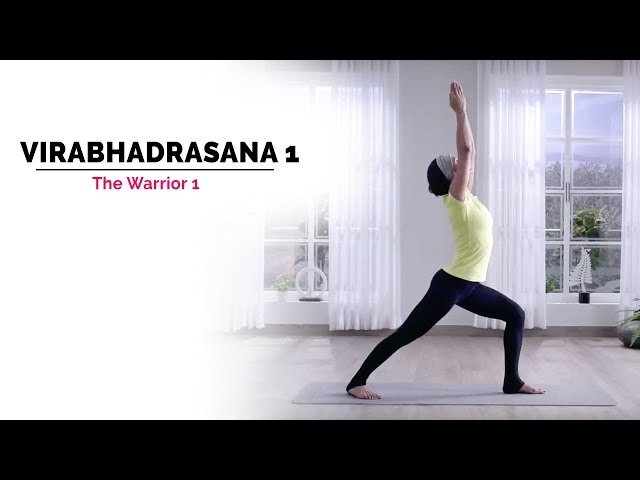The Benefits of Practicing Vrksasana (Tree Pose) Daily
Namaste 🙏
Tree Pose, also known as Vrksasana, is a foundational yoga posture that embodies grace, strength, and balance. The beauty of tree pose lies in its symbolism: like a sturdy tree rooted in the earth, this pose teaches us to stand tall and firm, yet flexible enough to sway gently in the breeze. As you embark on your journey to master tree pose, you'll discover not only physical stability but also inner tranquility and mindfulness.
Introduction
Imagine standing in a lush forest, surrounded by towering trees, their branches swaying gently in the wind. You're inspired by their strength, their resilience, and their majestic stillness. This is the essence of Tree Pose, or Vrksasana—a yoga pose that invites you to embody the qualities of these magnificent trees: rooted, yet reaching for the sky. The first time I tried to balance in Tree Pose, I was more of a trembling leaf than a sturdy oak. Yet, when I finally managed to find my balance, even for just a few seconds, the sense of achievement was profound. It was a powerful reminder that growth often comes from staying grounded, yet flexible in the face of life's breezes and storms.
Tree Pose is more than just a physical test; it's a meditation on balance, focus, and the interconnectedness of life. It's a foundational pose in yoga that challenges your balance, strengthens your legs, and opens your hips, all while calming the mind and deepening your breath. Whether you're stepping onto your yoga mat for the first time or seeking to deepen your practice, Tree Pose offers a pathway to discovering your inner strength and stability.
This guide is designed with beginners in mind, offering a step-by-step approach to mastering Tree Pose. Through detailed instructions, tips for success, and insights into the pose's deeper meaning, you'll learn not only how to stand like a tree but also how to embody its enduring qualities in your yoga practice and beyond. Let's embark on this journey together, exploring how Tree Pose can root you in the present moment, inviting peace, balance, and a sense of groundedness into your life.
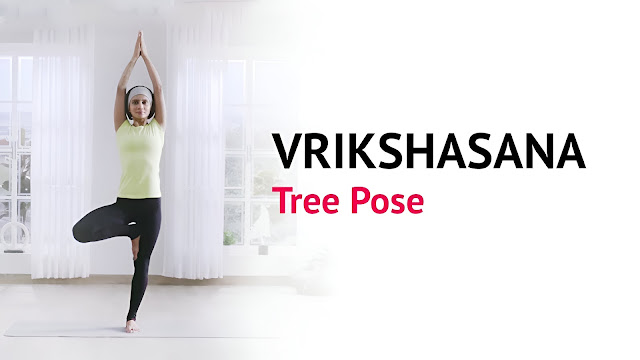 |
| Tree Pose |
The Roots of Tree Pose
Tree Pose, known as Vrksasana in Sanskrit, where "Vrksa" means tree and "asana" refers to pose, is a timeless emblem within the yoga tradition. Its roots delve deep into the rich soil of yoga's ancient history, offering practitioners a way to connect with the enduring qualities of trees—strength, stability, and the beauty of growth. While the exact origin of Tree Pose is shrouded in the vast tapestry of yoga's millennia-old history, its significance has remained unwavering, serving as a vital component of yoga practice for fostering balance, concentration, and a profound connection with the earth.
The symbolism of Tree Pose is as rich and multi-layered as the forests that inspire it. At its core, Vrksasana is a meditation on balance—not just the physical equilibrium required to stand on one foot, but the inner harmony that arises from aligning body, mind, and spirit. Like a tree, a practitioner in Tree Pose seeks to be deeply rooted in the present moment, drawing nourishment from the earth below, while reaching upwards towards the sunlight, embodying growth and aspiration.
Stability is another fundamental theme of Tree Pose. Just as a tree's roots anchor it firmly, allowing it to weather storms and winds, practicing Vrksasana encourages you to cultivate a sense of grounding. This stability is not rigid but adaptable, allowing you to sway gently in the face of life's challenges while remaining deeply anchored to your core values and inner strength.
Growth, too, is a critical aspect of Tree Pose and its symbolism. Trees do not rush their ascent towards the sky; their growth is gradual, marked by cycles of renewal and resilience. Similarly, mastering Tree Pose—and yoga in general—is a journey of personal evolution, one that teaches patience, persistence, and the beauty of unfolding at your own pace.
In practicing Tree Pose, you embody the qualities of the majestic trees that have inspired yogis for generations. You learn the art of balance, the strength of stability, and the grace of growth, planting the seeds for a yoga practice that is deeply rooted yet infinitely expansive.
Benefits of Tree Pose (Vrksasana)
Tree Pose, or Vrksasana, is more than just a test of balance—it's a holistic practice that nurtures your body, sharpens your mind, and connects you with the natural world. When you step into Tree Pose, you're not merely standing on one leg; you're tapping into a wellspring of benefits that can enhance your physical and mental well-being. Let's explore the rich benefits this pose offers.
- Improved Balance and Stability in the Legs: One of the most apparent benefits of Tree Pose is the improved balance and stability it offers. As you root your foot into the ground and focus on maintaining your equilibrium, you're engaging and strengthening the muscles in your legs. This not only helps you stand firmer in your Tree Pose but also enhances your overall balance and stability in daily activities.
- Increased Focus and Mental Clarity: Tree Pose demands concentration. As you find your balance and hold your pose, your mind must focus, pushing aside distractions. This intense concentration can lead to increased mental clarity, making Tree Pose not just a physical exercise, but a meditative practice as well. It's like taking a deep breath for your brain, allowing you to clear away the mental clutter and focus on the present moment.
- Strengthened Thighs, Calves, Ankles, and Spine: The act of balancing on one foot requires a surprising amount of muscular engagement. Your thighs, calves, and ankles work together to keep you upright, while your spine aligns itself over your center of gravity. This gentle yet effective strengthening can help protect against injuries by building more resilient muscles and joints.
- Enhanced Flexibility in the Hips and Thighs: As you place one foot against your standing leg, you're also opening up your hips and stretching the thighs. For those who spend a lot of time sitting or have tight hip muscles, Tree Pose can be a gentle nudge towards greater flexibility and mobility in these key areas.
- A Sense of Grounding and Connection with the Earth: Beyond the physical benefits, Tree Pose offers a profound sense of grounding. As you press your foot into the floor, imagine drawing strength from the earth, just like the roots of a tree. This connection can foster a feeling of stability and calmness, reminding you of your place in the natural world and helping to reduce feelings of stress and anxiety.
Tree Pose is a testament to the beauty of balance, the strength of stability, and the grace of growth. As you practice Vrksasana, you're not just standing on one leg—you're cultivating a tree's qualities within yourself, embracing a journey of continuous growth and deep-rooted strength.
Scientific Studies about Tree Pose (Vrksasana)
The Tree Pose, or Vrksasana, is a yoga pose that has several scientifically backed benefits:
1. Improves Balance and Stability: The pose develops balance, concentration, stability, and poise. It also improves awareness of your body 🔗 🔗.
2. Strengthens Muscles: It strengthens the muscles of the legs, feet, glutes, back, and core. This can help improve your alignment and posture 🔗 🔗.
3. Enhances Flexibility and Mobility: The pose involves the quadriceps, hamstrings, and calf muscles, helping to strengthen them over time. It also increases flexibility in the hips and knees 🔗 🔗.
4. Boosts Mental Health: Vrksasana can improve focus and concentration. It also has a calming effect and can help reduce anxiety and stress levels 🔗.
5. Beneficial for People with Diabetes: Regular practice of Vrksasana is believed to build balance and coordination among people with diabetes, who are prone to altered body orientation due to neuropathy 🔗.
Remember, it's always important to perform yoga poses with the correct technique to get the maximum health benefit and avoid any injuries. If you're new to yoga, it might be helpful to learn this pose under the guidance of a certified yoga instructor.
Step-by-Step Guide to Tree Pose
Embarking on your journey into Tree Pose, or Vrksasana, is like planting a seed of balance and strength within yourself. Follow this step-by-step guide to cultivate your Tree Pose practice, from finding your base to gracefully exiting the pose.
Preparation:
Before diving into Tree Pose, take a few moments to warm up your body. Gentle stretches for the legs, hips, and spine can help prepare your muscles and joints for the pose. You might also want to practice some balancing exercises to awaken your proprioception—the sense of your body's position in space.
- Step 1: Finding Your Base:- Begin in Mountain Pose (Tadasana), standing tall with your feet hip-width apart and arms relaxed by your sides. Ground yourself firmly into the earth, feeling the connection between your feet and the floor.
- Step 2: Shifting Weight and Lifting the Foot:- Shift your weight onto one leg while keeping the other foot grounded. Slowly lift the opposite foot off the floor, finding a balance between stability and lightness.
- Step 3: Placing the Foot on the Inner Thigh:- Bring the sole of your lifted foot to rest against the inner thigh of your standing leg. If this feels challenging, you can place the foot on the calf or ankle of the standing leg, avoiding the knee joint for stability.
- Step 4: Aligning the Body and Finding Balance:- Engage your core muscles to stabilize your pelvis and lengthen your spine. Imagine growing taller, like a tree reaching for the sky. Find a focal point—a "drishti"—to gaze at, aiding in your balance and concentration.
- Step 5: Raising the Arms:- As you find your balance, you can choose to raise your arms overhead, palms together in a prayer position (Anjali Mudra). This variation, known as "full Tree Pose," adds an extra challenge to your balance and strengthens your arms and shoulders.
For beginners, keeping the hands on the hips or in a prayer position at the heart center can provide more support and stability.
- Step 6: Holding the Pose:- Stay in Tree Pose for several breaths, maintaining a steady gaze and steady breath. Use the breath to anchor your focus and stability—inhaling deeply to lift taller, exhaling to ground more firmly.
- Step 7: Exiting the Pose Gracefully:- To release from Tree Pose, lower your arms if they are raised, then gently lower your lifted foot back to the floor. Return to Mountain Pose with both feet grounded, taking a moment to observe the sensations in your body.
Remember, Tree Pose is about finding your own balance and grace. It's okay to wobble or adjust—each attempt is a step towards growth and strength. With practice and patience, you'll find yourself rooted in Tree Pose, embodying the stability and beauty of a flourishing tree.
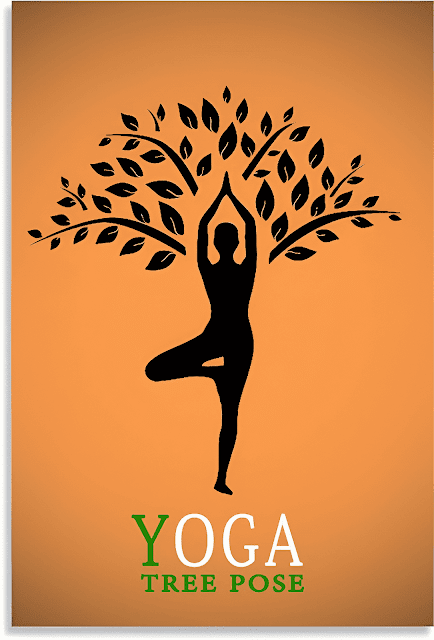 |
| Yoga Tree Pose |
Common Mistakes and How to Avoid Them in Tree Pose
As you venture into Tree Pose, it's natural to encounter challenges along the way. Here are some common mistakes beginners often make in Tree Pose—and valuable tips on how to avoid them, ensuring a more stable and fulfilling practice.
1. Overarching the Back
- Mistake: Arching the back excessively can compromise spinal alignment and stability, leading to discomfort or strain.
- Avoidance Tip: Engage your core muscles and gently draw your lower ribs in to support a neutral spine. Imagine lengthening your tailbone towards the floor while lifting the crown of your head towards the sky.
2. Placing the Foot on the Knee
- Mistake: Resting your foot directly on the knee joint can create unnecessary pressure and instability, potentially causing injury.
- Avoidance Tip: Aim to place your foot either above or below the knee joint. Options include resting the foot on the inner thigh (without pressing into the knee) or placing it on the calf or ankle for added support.
3. Forgetting to Breathe
- Mistake: Holding your breath or breathing shallowly can disrupt your focus and make it harder to maintain balance.
- Avoidance Tip:Stay mindful of your breath throughout Tree Pose. Inhale deeply to lengthen your spine and create space, exhale slowly to ground yourself and find stability. Let your breath be your anchor as you hold the pose.
4. Losing Focus on a Fixed Point
- Mistake:Allowing your gaze to wander or constantly shifting your focus can destabilize your balance and concentration.
- Avoidance Tip: Choose a fixed point—a "drishti"—to gaze at during Tree Pose. This could be a spot on the floor a few feet ahead or a point on the wall. Keep your eyes soft and focused, allowing your gaze to support your stability and inner calm.
By being aware of these common mistakes and implementing these avoidance tips, you'll enhance your Tree Pose experience. Remember, yoga is a journey of self-discovery and growth. Embrace each attempt with patience and kindness towards yourself, and let each practice deepen your connection to your body and breath.
Modifications and Props for Beginners in Tree Pose
If you're new to Tree Pose (Vrksasana) or find it challenging to maintain balance, don't worry—there are modifications and props that can support you on your journey. Let's explore some beginner-friendly options to help you feel more comfortable and confident in Tree Pose.
1. Using a Wall for Support
- Modification: Stand near a wall and place your hand lightly on it for support as you practice Tree Pose.
- Benefits: The wall provides a stable surface to lean on, allowing you to focus on aligning your body and finding your balance without the fear of falling over. Gradually, as you gain confidence, you can reduce the pressure on the wall and rely more on your own stability.
2. The Role of a Yoga Block
- Modification: Place a yoga block under your foot to elevate it slightly, especially if reaching the inner thigh feels challenging.
- Benefits:Elevating your foot with a block reduces the distance you need to lift your leg, making it easier to find your balance. It also provides a tactile cue for proper alignment, encouraging you to engage your muscles and lift from the inner thigh.
3. Alternative Foot Placements for Balance Struggles
- Modification: Instead of placing your foot high on the inner thigh, try resting it lower on the calf or ankle of your standing leg.
- Benefits: Lowering the foot placement can make Tree Pose more accessible, especially if you're still working on building leg strength and stability. It allows you to experience the essence of the pose while gradually working towards the full expression over time.
By incorporating these modifications and props, you can tailor Tree Pose to suit your current level of comfort and ability. Remember, yoga is about honoring your body and its unique journey. Embrace these tools as aids on your path to mastering Tree Pose, and enjoy the benefits of balance, strength, and mindfulness that it offers.
Incorporating Tree Pose into Your Yoga Routine
Tree Pose (Vrksasana) is a versatile and beneficial yoga pose that can be seamlessly integrated into your daily practice. Here are some suggestions for incorporating Tree Pose into your yoga routine and combining it with other balancing asanas for a holistic balance-focused session.
1. Daily Practice Suggestions:
- Morning Ritual: Start your day by practicing Tree Pose as part of a gentle morning yoga routine. This can help awaken your body, improve focus, and set a positive tone for the day ahead.
- Midday Break: Take a break during your workday to stretch and rejuvenate with a few rounds of Tree Pose. It can help relieve tension, boost energy levels, and enhance mental clarity.
- Evening Wind-Down: Wind down in the evening with a calming yoga sequence that includes Tree Pose. Focus on deep breathing and relaxation to release stress and prepare for a restful night's sleep.
2. Combining Tree Pose with Other Balancing Asanas:
- Warrior III (Virabhadrasana III): Flow from Tree Pose into Warrior III for a dynamic balance-focused sequence. Warrior III strengthens your legs, core, and improves overall stability.
- Eagle Pose (Garudasana): Transition from Tree Pose to Eagle Pose to challenge your balance and enhance concentration. Eagle Pose also stretches the shoulders and upper back.
- Half Moon Pose (Ardha Chandrasana): Incorporate Half Moon Pose after Tree Pose for a full-body balancing experience. This pose improves balance, strengthens the legs, and opens the hips and chest.
- Standing Split (Urdhva Prasarita Eka Padasana): Transitioning from Tree Pose to Standing Split can further enhance leg strength, flexibility, and balance.
By weaving Tree Pose into your yoga routine and combining it with other balancing asanas, you create a comprehensive practice that cultivates stability, focus, and mind-body connection. Explore different variations and sequences to discover what feels best for you, and enjoy the benefits of a balanced and harmonious yoga practice.
FAQs for Beginners: Tree Pose (Vrksasana)
As you begin your journey with Tree Pose (Vrksasana), you may have questions and concerns. Here are some common FAQs addressed to help you navigate your practice more effectively.
Q1: What should I do if I keep falling out of Tree Pose?
A: Falling out of Tree Pose is normal, especially for beginners. Focus on these tips:
- Find a focal point (drishti) to gaze at for better balance.
- Engage your core muscles and press your foot firmly into your standing leg.
- Start with a lower foot placement (calf or ankle) until you feel more stable.
- Use a wall or chair for support until you gain confidence.
Q2: How long should I hold Tree Pose?
A:Beginners can start by holding Tree Pose for 30 seconds to 1 minute on each side. Gradually increase the duration as you build strength and stability. Listen to your body and take breaks as needed.
Q3: Can I practice Tree Pose if I have balance issues?
A: Yes, Tree Pose can actually help improve balance over time. Start with modifications like using a wall or chair for support. Focus on steady breathing and gradual progress.
Q4: What are the benefits of Tree Pose?
A: Tree Pose strengthens the legs, improves balance, enhances concentration, and fosters a sense of grounding and connection with the earth.
Q5: Should I practice Tree Pose on both sides?
A: Yes, it's important to practice Tree Pose on both sides to maintain balance and symmetry in your body. Alternate sides during each practice session.
Q6: Can I do Tree Pose if I have knee or hip issues?
A: Consult with a healthcare professional or a certified yoga instructor before attempting Tree Pose if you have knee or hip issues. They can provide guidance on modifications or alternative poses that suit your needs.
Q7: How can I deepen my Tree Pose practice?
A: Work on improving your balance, focus on proper alignment, and gradually explore more challenging variations, such as raising your arms overhead or closing your eyes (if comfortable and safe to do so).
By addressing these FAQs, you can approach Tree Pose with more confidence and understanding, making your yoga practice more enjoyable and beneficial. Remember to listen to your body, be patient with yourself, and enjoy the journey of growth and discovery in your yoga practice.
 |
| Tree Pose |
Conclusion
As you conclude your exploration of Tree Pose (Vrksasana), remember that mastering this pose is a journey—a journey that requires patience, practice, and a willingness to embrace both the successes and the challenges along the way. Just like a tree steadily grows and adapts to its environment, so too can you cultivate strength, balance, and resilience through your yoga practice.
Embrace the process of learning Tree Pose, knowing that each attempt brings you closer to finding your balance and center. Be kind to yourself as you navigate the wobbles and adjustments, for it is in these moments that growth and learning truly unfold.
Let Tree Pose serve as a metaphor for your own life journey. Like a tree, you have the capacity to stand tall and rooted, weathering the storms of life while reaching towards the light of growth and transformation. Through yoga and the practice of Tree Pose, you can tap into your inner strength, enhance your focus, and find a sense of grounding amidst life's fluctuations.
As you continue your yoga practice, may Tree Pose inspire you to cultivate resilience, embrace challenges as opportunities for growth, and find balance and harmony in every aspect of your life. Namaste 🙏.
.jpg)
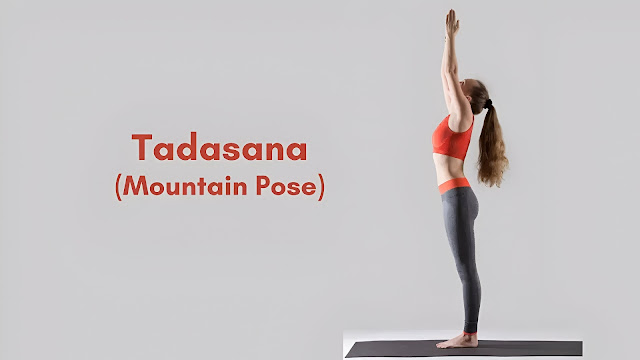
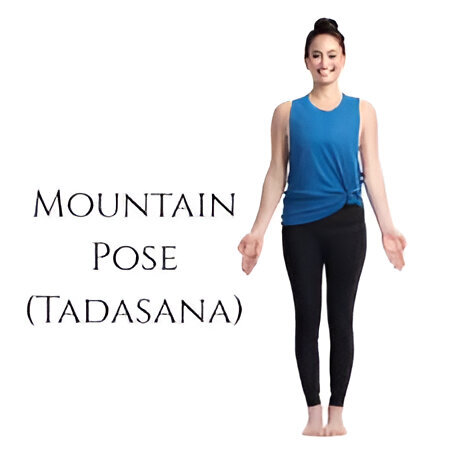
.png)
%20(1).png)

